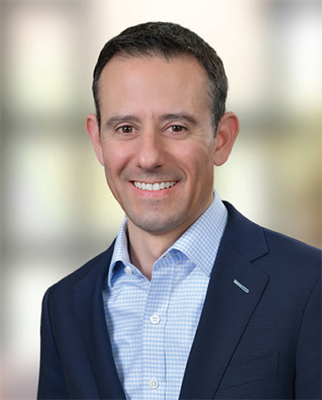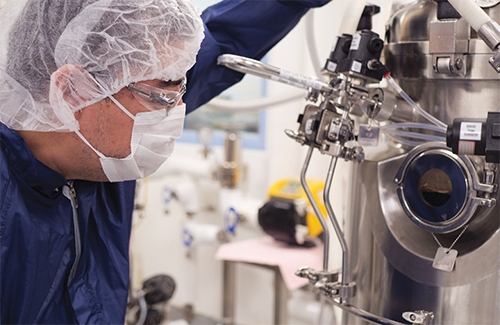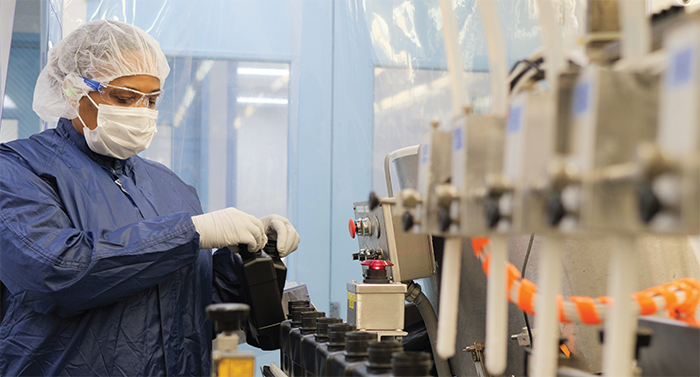Next Generation Sequencing: how Roche’s innovation is leading the healthcare industry
For 125 years, Roche has been gaining traction in the pharmaceutical manufacturing industry. Today, the company is renowned as one of the world’s largest biotech businesses, as well as a leading provider of in vitro diagnostics, and serves as a global supplier of innovative solutions across major disease areas.
Roche has always had a passion for diagnostics, especially when it comes to molecular work. Over the last two years, the importance of diagnostics has come to the fore in terms of how the healthcare industry is able to provide for those in need. “The pandemic highlighted the importance of the work we do here,” shares Nick Solimo, the Vice President of Global Operations. “For health care providers in particular, early detection is crucial. The information we make available through our diagnostic products provides clinicians with critical insights that can improve patient outcomes and reduce the long-term cost of care. What we’re focusing on currently is accelerating our strategy, and being able to adapt quickly to market changes,” says Nick.
Despite the fluctuations the company has experienced, innovation has remained a cornerstone to its success, and for Nick, a prime example of this is how the company mitigated the challenges of the pandemic. “From a PCR standpoint, we developed an approach to build an assay, and we achieved it in the same way we have with many other pathogens we’ve tackled.
how the company mitigated the challenges of the pandemic. “From a PCR standpoint, we developed an approach to build an assay, and we achieved it in the same way we have with many other pathogens we’ve tackled.
“It took an agile team, on the operations side, to co-develop the assay with the development department. Typically, our competitors go through an R&D phase that lasts between 18 and 24 months. To help our team accelerate the process, we developed part of the assay here within our operations, and I think, from start to finish, it took about six weeks,” Nick expresses.
Despite Roche’s extensive innovation capabilities, Nick admits the healthcare industry is facing a few challenges that he is keen to iron out. “It’s important to recognize that as manufacturers, our supply chain is extensive. We have been trying to de-risk any potential problems, and during the pandemic, we did a lot of second and triple sourcing in some areas, and targeted different companies. Many in the US were smaller mid-level organizations, such as injection blow molding companies, plastics, businesses where I could get on the phone and talk to the owners to really build a relationship where we could grow as a partnership.
Moving forwards
“Added to these challenges, we are very aware of current energy costs and inflation, and we are looking at how we can absorb some additional costs for clients, without transferring that on. For manufacturing, we increased our operation significantly. We ramped up our work, but we did it in a way that was sustainable for after the pandemic. We also need to bring in excellent people, so for us it is about sharpening the pencil, looking at the operation, and trying to drive as many high value process efficiencies as possible.
“I know that how we manage our second and third shifts will change according to the demand. We are not going to be growing as rapidly but we are determined to implement measures that refine our operations. This approach was inspired by our experience in the pandemic, and, going forward, we are taking what we learnt and improving that across the board, especially when it comes to our people.
“The example I like to give is that we did a lot more on the rewards and recognition side for our team during the peak of the pandemic, which was invaluable. What we are looking at now is how we can keep up that momentum to show our teams and the organization here that we value them. ‘The pandemic is over, and you guys did this great job, and we are going to do even greater stuff in the future,’ so that is a big focus for the leadership team and myself right now,” he shares.
Taking into consideration the future of the medical sector, Nick predicts that Next-Generation Sequencing (NGS) is an area that will grow in demand, and he is excited to bring to the market. “Regarding some of our oncology products, for example, where we are looking for someone who has small cell lung cancer, we have a product that can test what mutation they have, and we can match them with the right drug as a consequence. Imagine being able to identify someone at stage zero of their diagnosis. We are looking at genetic mutations and how they change over time. So, I believe that in the next five years, NGS is going to take a stronghold within the market. From our perspective, we are going to ensure we are part of this development and help change the medical sector for the better,” Nick concludes. These developments are going to serve as innovative ventures for both the healthcare industry and Roche’s capabilities, and we look forward to seeing how the business continues to grow from strength-to-strength.
www.roche.com
